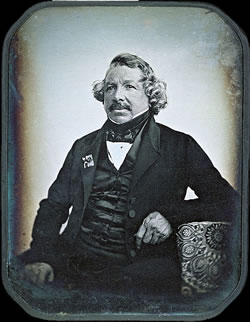Who took the first photo of the moon?
 January 2, 1839 — The first photo of the Moon was taken today in 1839 by Louis-Jacques-Mandé Daguerre (November 18, 1787 – July 10, 1851), a French artist and photographer who is recognized for his invention of the daguerreotype process of photography.
January 2, 1839 — The first photo of the Moon was taken today in 1839 by Louis-Jacques-Mandé Daguerre (November 18, 1787 – July 10, 1851), a French artist and photographer who is recognized for his invention of the daguerreotype process of photography.
Before the invention of photography, astronomers had to sketch what they saw in their telescopes by hand, often missing crucial details. Astronomers made reproductions by redrawing the original illustrations, enabling errors to creep in. It was the invention of the daguerreotype that showed them a far superior method was possible.
Known as one of the fathers of photography, Daguerre discovered how to reduce exposure time to 20 to 30 minutes. Legend has it that he accidentally broke a mercury thermometer, giving him the idea that a shorter exposure time would produce a very faint image, but this image could be further enhanced via a chemical process involving the vapor given off by mercury heated to 75° Celsius.
Daguerre then “fixed” the image, so it wouldn’t be sensitive to further exposure to light, by rinsing it in a solution of common salt. The surface was still prone to tarnishing, even by the slightest friction, so most daguerreotypes were sealed under glass before being mounted in a small folding case.
Image: Earliest known surviving photograph of the Moon, a daguerreotype taken in 1851 by John Adams Whipple
Sources
Words of Wisdom
I have seized the light. I have arrested its flight.





